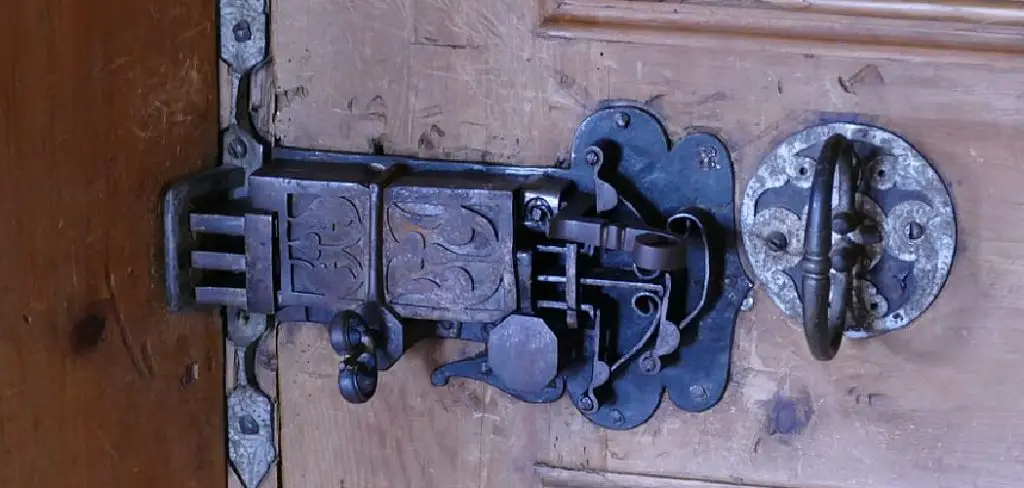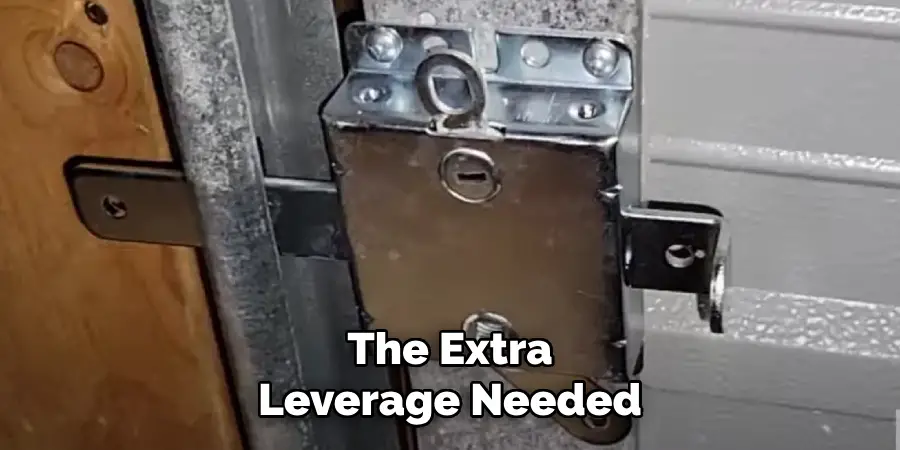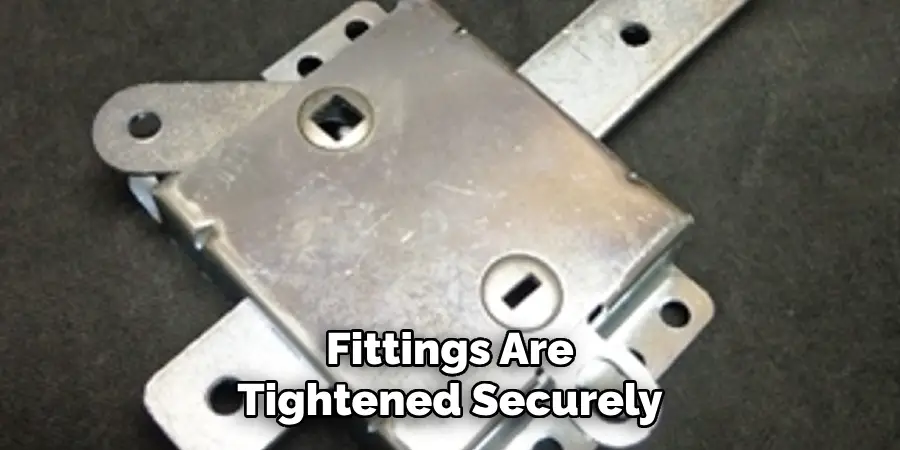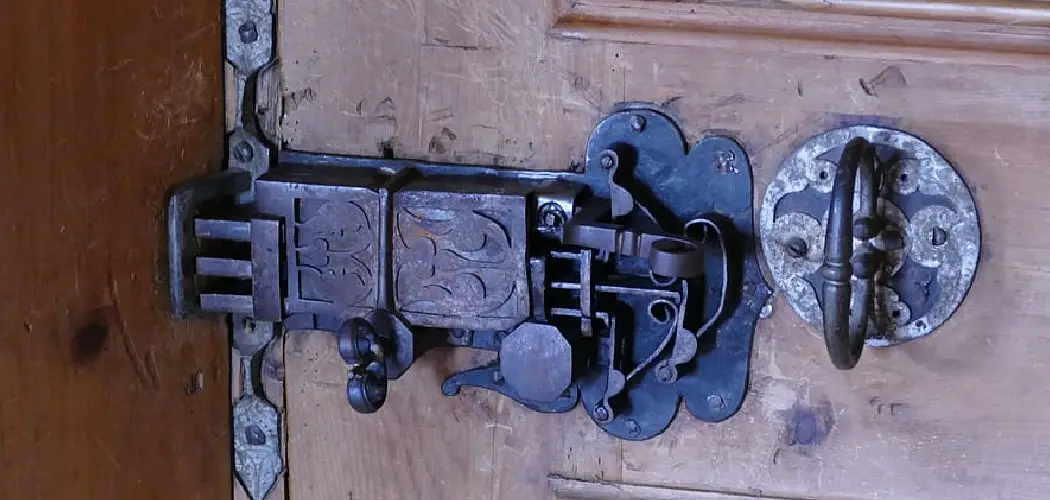A garage door slide lock is a common and effective security feature designed to keep your garage secure. However, there may be times when you need to unlock it, whether for routine access or maintenance purposes.

Understanding how to properly unlock a slide lock not only saves time but also prevents potential damage to the lock or your garage door. This guide will provide you with straightforward steps for how to unlock garage door slide lock.
Understanding Garage Door Slide Locks
Garage door slide locks function by sliding a metal bolt into a hole or slot in the garage door track, effectively preventing the door from being opened. These locks are typically installed on the inside of the door and are manually operated. They are often used in conjunction with other security features, such as electronic openers, to provide an additional layer of protection. Slide locks are simple in design, making them durable and reliable for long-term use. Understanding how they work and their components—such as the locking bolt, handle, and mounting plate—can help you troubleshoot issues and ensure proper operation.
Reasons Why a Slide Lock May Get Stuck
There are several common reasons why a slide lock might become stuck, preventing it from functioning properly. One possibility is a buildup of dirt, dust, or debris within the locking mechanism, which can obstruct the movement of the locking bolt. Another reason could be rust or corrosion, especially if the lock is exposed to moisture or humidity over time. Misalignment of the mounting plate or shifting of the door frame can also cause the slide lock to bind, making it difficult to engage or disengage.
Additionally, wear and tear on the lock’s components, such as a warped bolt or a damaged handle, might contribute to the issue. Regular maintenance, including cleaning and lubrication, can help prevent these problems and ensure the lock operates smoothly.
10 Methods How to Unlock Garage Door Slide Lock

1. Identify the Type of Slide Lock and Its Mechanism
Before attempting to unlock the slide lock, take a moment to closely examine it. Slide locks come in various designs—some have a simple manual sliding bolt, while others incorporate a spring-loaded catch or a keyed locking mechanism. Identifying whether your lock requires a key, a simple push, or a lift-and-slide action helps avoid unnecessary force or damage.
Look for visible signs of rust, damage, or misalignment which can inform your next steps. Knowing the exact type and condition of your lock is foundational to choosing the right unlocking approach.
2. Lubricate the Slide Lock to Ease Movement
If the slide lock feels stiff or refuses to budge, the problem may be friction caused by rust, dirt, or grime. Applying a lubricant such as WD-40 or a silicone spray directly into the sliding mechanism can help loosen it. Spray the lubricant along the track and around the bolt area, allowing it to seep in and work through any buildup. After letting it sit for a few minutes, try sliding the lock again gently. Regular lubrication is a preventive measure as well, but when unlocking, it often provides the needed ease to free a stuck lock without damaging it.
3. Use a Flathead Screwdriver to Gently Pry the Bolt
If lubrication alone isn’t enough, sometimes the slide lock bolt may be slightly jammed or caught on debris inside the track. A flathead screwdriver can be useful to carefully pry the bolt or nudge it into position. Insert the screwdriver between the lock bolt and the door frame or track, then gently twist or push to shift the bolt free. Avoid forcing the screwdriver too hard, which could bend the lock or damage the door. This delicate prying technique can free a bolt caught on misaligned metal or small obstructions.
4. Check for Freeze or Temperature-Related Sticking
In colder climates, garage door slide locks often freeze in place due to moisture accumulation. If your lock feels immovable on a cold day, try warming it up. Use a hairdryer or heat gun on a low setting to carefully thaw the lock mechanism. Avoid using open flames or excessive heat, which could damage the lock’s components or paint. Once warmed, apply lubricant and attempt sliding the lock again. Warming the lock before trying mechanical methods prevents breaking brittle parts due to cold-induced rigidity.

5. Use a Key if Your Slide Lock is Lockable
Some slide locks include a keyed lock for extra security. If this applies to your garage, check to see if you have the corresponding key. Insert the key fully, and gently turn it to unlock.
Sometimes keys become stiff from lack of use—applying a graphite-based lock lubricant into the keyhole can ease turning. If the key won’t turn, avoid forcing it; this may break the key inside the lock. Instead, try wiggling the key gently while applying light pressure or use a lock lubricant specifically designed for locks.
6. Tap the Lock Gently to Free Stuck Internal Components
If the lock is old or has internal parts that are sticking or misaligned, gentle tapping can help. Use a rubber mallet or the handle of a screwdriver to tap around the lock housing.
This vibration can dislodge debris or shift internal parts back into alignment. Be careful not to hit too hard, as this can damage the lock or the garage door surface. Tapping is often effective for spring-loaded slide locks that have become stuck because of worn or jammed internal springs.
7. Disengage Any Secondary Locks or Safety Pins
Sometimes slide locks have additional security features like safety pins, padlocks, or secondary locks attached to them. Before trying to slide the bolt, make sure these additional locking mechanisms are removed or disengaged.
Check the entire locking assembly carefully to see if a padlock is holding the bolt in place or if a retaining clip must be removed. Overlooking these extra components is a common reason the lock won’t open, so always double-check for hidden restraints.
8. Use Pliers for Extra Grip on Stubborn Bolts
When the slide bolt is stuck due to rust or paint buildup and cannot be moved by hand, pliers can provide the extra leverage needed. Using slip-joint or locking pliers, grip the bolt firmly and attempt to slide it back. To avoid damaging the bolt or lock housing, use padded pliers or wrap the bolt in a cloth before gripping. Apply steady, even pressure rather than jerking motions. This method is especially helpful for old or poorly maintained locks that have seized over time.

9. Remove the Slide Lock from the Door Temporarily
If the lock still refuses to slide open, and you have the tools and ability, consider removing the lock from the door temporarily. Most slide locks are attached with screws or bolts that can be unscrewed using a screwdriver or wrench.
Once detached, you can inspect the lock off the door for any internal damage or blockages. Cleaning and lubricating the lock externally often frees the mechanism. After servicing, reinstall the lock securely. This method is ideal when in-place unlocking attempts fail repeatedly.
10. Call a Professional Locksmith or Garage Door Technician
When all else fails, or if the lock is complicated or integrated with other security systems, the safest option is to call a professional. Locksmiths and garage door specialists have the tools, experience, and expertise to unlock and repair stubborn slide locks without damaging the door or lock itself.
Professionals can also advise on replacement if the lock is beyond repair or recommend upgraded locking mechanisms for better security. While this method involves cost, it guarantees a damage-free and secure solution.
Maintenance and Upkeep
Proper maintenance and regular upkeep of slide locks can significantly extend their lifespan and ensure optimal functionality. Begin by routinely inspecting the lock for signs of wear, rust, or dirt buildup. Cleaning the lock with a soft cloth and applying a silicone-based lubricant can prevent sticking or jamming.
Additionally, check the alignment of the lock mechanism and ensure that all screws and fittings are tightened securely. For locks exposed to outdoor elements, consider using weather-resistant models or protective covers to minimize damage from moisture and extreme temperatures. Regular maintenance not only enhances security but also reduces the likelihood of costly repairs or replacements over time.

Conclusion
Unlocking a garage door slide lock can be straightforward when you understand the lock’s design and apply the appropriate method carefully. From simple lubrication and warming techniques to more hands-on mechanical approaches like prying or removing the lock, there are numerous ways to free a stuck slide lock.
Always prioritize safety and avoid excessive force that could damage the lock or door. When unsure or facing persistent issues, consulting a professional locksmith or technician is wise. Thanks for reading our blog post on how to unlock garage door slide lock! We hope you found it helpful and informative.
I am Rick. I grew up helping my dad with his handyman service. I learned a lot from him about how to fix things, and also about how to work hard and take care of business. These days, I’m still into fixing things- only now, I’m doing it for a living.
I’m always looking for new ways to help people grow and develop. That’s why I have created this blog to share all my experience and knowledge so
that I can help people who are interested in DIY repair.

